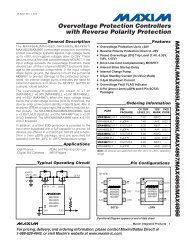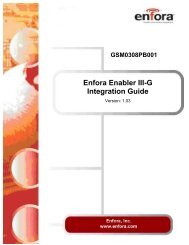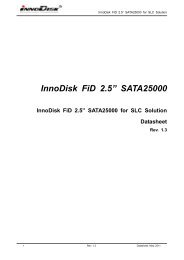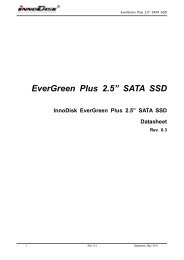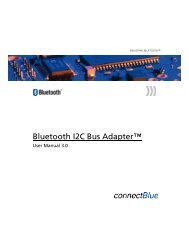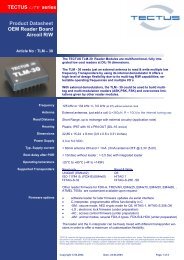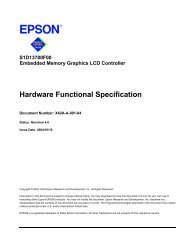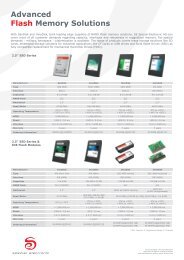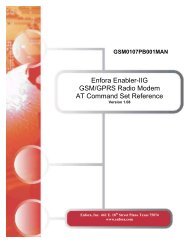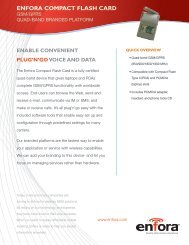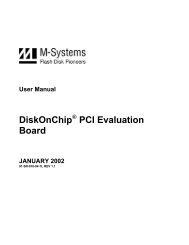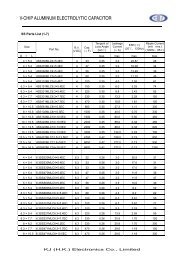AT+i Programmer's Manual - SE Spezial-Electronic AG
AT+i Programmer's Manual - SE Spezial-Electronic AG
AT+i Programmer's Manual - SE Spezial-Electronic AG
Create successful ePaper yourself
Turn your PDF publications into a flip-book with our unique Google optimized e-Paper software.
23 Flow Control<br />
23.1 Host iChip Software Flow Control<br />
Flow Control<br />
When issuing an <strong>AT+i</strong>EMB command to generate a binary e-mail, an <strong>AT+i</strong>SSND<br />
command to transfer data to a socket, an <strong>AT+i</strong>TBSN to send a binary stream to a Telnet<br />
server, or an <strong>AT+i</strong>FSND command to transfer a file, the host transfers a binary data<br />
stream to iChip. At times, this stream may be very large.<br />
Once iChip establishes a connection, it acts as a pipeline, transferring data received from<br />
the host to the Internet. However, the data rates at the host and Internet ends are not<br />
always balanced. This happens for several reasons:<br />
While iChip logs onto the Internet and establishes a connection, the host proceeds to<br />
send its data stream to iChip. During this time iChip receives data from the host, but<br />
cannot send it out.<br />
When sending MIME attachments, iChip encodes the binary data using base 64. This<br />
roughly inflates binary data by 30%. Thus, more data needs to be transmitted than is<br />
received from the host.<br />
When using a TCP/IP socket, iChip might need to re-transmit packets.<br />
The amount of buffer space available in the iChip to accommodate for this imbalance is<br />
limited. Therefore, a flow control scheme is required to regulate hostiChip<br />
communications. The FLW parameter is set to reflect the preferred flow control mode.<br />
The software-driven flow control protocol is defined as follows:<br />
1. While the host is transferring the binary stream,following the +iEMB, +iSSND, or<br />
+FSND prefixes, iChip issues a ‗WAIT‘ control character when it needs to pause the<br />
host. The host application is required to monitor its serial receive line and pause the<br />
transmission when a ‗WAIT‘ control character is received.<br />
2. To resume the host transmission, iChip issues a ‗CONTINUE‘ control character. The<br />
host is required to monitor its receive line after being paused in anticipation of this<br />
control character. Once received, the host might continue to transfer the data stream.<br />
3. If an error occurs during the Internet session while the host is transferring the data<br />
stream (or while paused), iChip issues an ‗ERROR‘ control character if some error<br />
occurred. Immediately after issuing this control character, iChip aborts the Internet<br />
session and issues an ‗I/ERROR (error number)‘ string. The host must cease<br />
transmitting the data stream when the ‗ERROR‘ control character is received.



